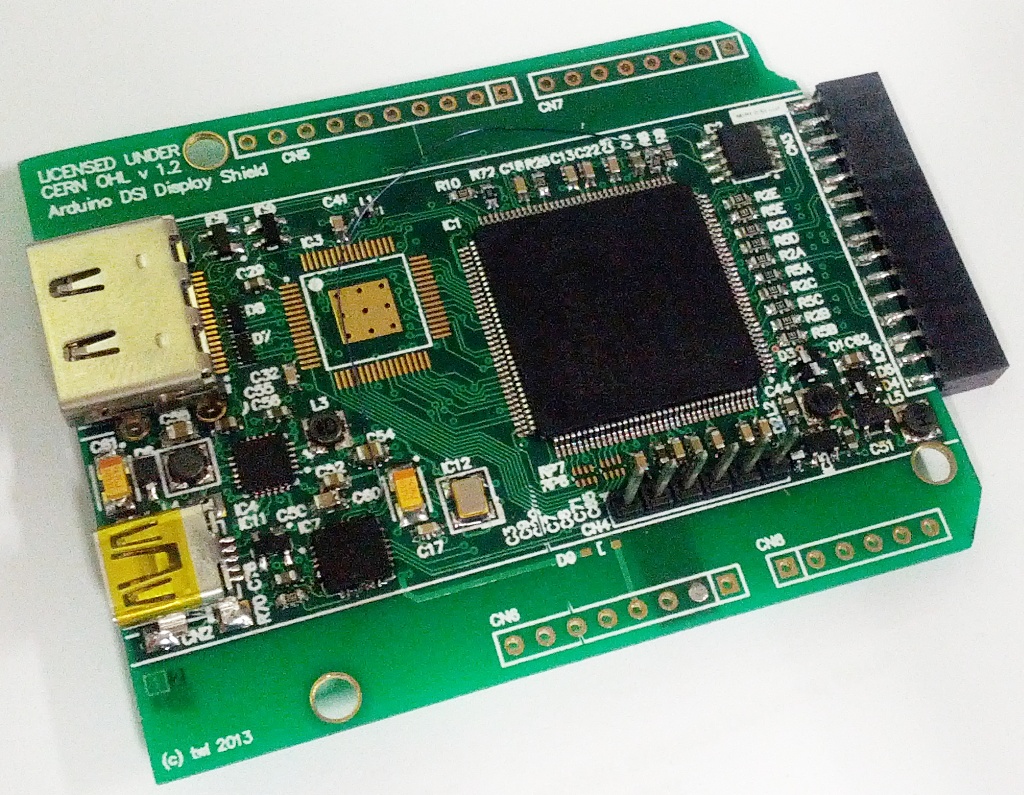

Parallel RGB Interface – A parallel interface configuration usually has a full data width, but no address bus. The three main color components of video signals, red, green and blue, are broken out and sent separately over a shielded pair of twisted pair of wires together with a clock signal, to lower the possibility of any interference, thus totaling 12 pins of the connector. HDMI Output – A HDMI interface delivers uncompressed digital video and multi-channel audio through TMDS which again is a differential signaling technology for transmitting high-speed serial data. A 4-lane interface would thus consist of four differential pairs (8 pins) plus one differential clock pair (2 pins) thus totaling 10 signal pins.Description Specification Documentation Resources Packing List Main features HDMI to 4lane MIPI DSI display interface Two DSI channel support 2 displays at. The interface typically consists of 4 data lanes and each data lane consists of two differential pins and two pins of differential clocks. MIPI-DSI – MIPI’s Display Serial Interface (DSI) is a unidirectional digital data interface between the processor and the display.
Mipi Dsi Display Code Up To
It involves serialization of the input data, distributing it among the four (or eight) serial pairs, and transmitting it at a clock rate seven times the original. LVDS – Low Voltage Differential Signaling is a unidirectional digital data display interface in which an LVDS transmitter IC is used to encode up to 24 bits of data per input clock onto four differential serial pairs. Thus the display get updated manually, by providing both pixel data and timing signals from a control unit. Displays are usually associated with a complete frame of data to render but this interface works without a frame buffer.


Video streaming use-cases like digital signage etc require HDMI displays to be supported owing to its ubiquity apart from being plug-and-play. RGB565 loosely packed 16 bits per pixelMost Snapdragons support MIPI-DSI display interface and HDMI output support is not common. RGB666 loosely packed 18 bits per pixel Supports up to 60 fps for XGA, 30 fps for 720P Bus speed up to 70 MHz with data rate up to 210 Mbytes/s
To cater to industrial use-cases, we also ensured that the entire platform which was based on Snapdragon™ 410, supports an extended temperature range. To implement a conversion from MIPI-DSI to LVDS, we chose a low power bridge chip that enables video streaming output over DSI link to drive LVDS-compatible display panels. 2-channel uncompressed LPCM I2S audio up to 192 kHzLVDS is a preferred display type for industrial use-cases owing to its ubiquitous availability in small sized panels. Compliant with HDMI2.0b, HDMI1.4 and DVI1.0 Compliant with D-PHY1.2 & DSI1.3 & CSI-2 1.3 SMART Wireless will soon be announcing an integrated solution based on Snapdragon™ 845 with fps HDMI 2.0 compliant output achieved through such a conversion.
Compatible with DPHY V.0.90 and DSI V.1.02 Supports inputs of 16-bit RGB565 18-bit RGB666 24-bit(loosely packed) RGB666 24-bit RGB888 Configurable 1- up to 4-Data-Lane DSI Link with bi-directional support on Data Lane 0
Features Toshiba Magic Square algorithm which enables a RGB666 display panel to produce a display quality almost equivalent to that of an RGB888 24-bit panelVideo conferencing use-cases necessitate multiple HDMI outputs. Supports outputs of RGB666 18 bits per pixel RGB888 24 bits per pixel Maximum pixel clock speed of 135 MHz for single-link or 270 MHz for dual-link
8-channel uncompressed LPCM I2S audio up to 192 kHzSMART Wireless Computing has been a long-running Qualcomm Embedded Solutions Partner for their Snapdragon product line and has the expertise to deliver many other display related solutions like: S/PDIF for stereo LPCM or compressed audio up to 192 kHz HDMI 1.4a transmitter compatible with HDMI 1.3, HDCP 1.2 225 MHz operation supports all video and graphics resolutions from 480i to 1080p at 60 Hz To do this conversion, a single-chip De-SSC LVDS to HDMI converter IC was used.
Have any display interface as primary or secondary/external to replace the default screen mirroring.We would be glad to help you create your product based on our platforms with the right displays enabled. Render multiple independent display panels concurrently. Enable flat panel displays with V-By-One interface. Enable any MIPI-DSI panel with touch and custom boot animations.


 0 kommentar(er)
0 kommentar(er)
